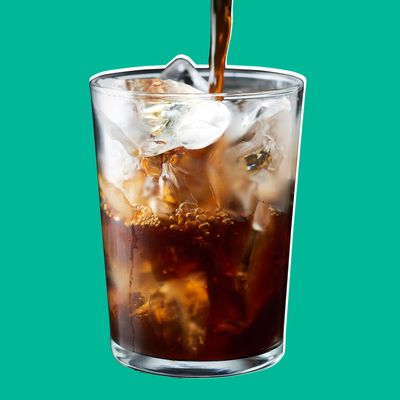
The problem with warm coffee right now is fairly obvious: It is hot. It is only going to get hotter. And the idea of a steaming beverage isn’t so appealing when stepping outside, as a friend of mine once put it, feels like walking into someone’s mouth.
But the problem with iced coffee, while less obvious, is no less distressing: It just doesn’t feel like it packs the same eye-opening, life-giving energy as the hot stuff. You’re walking into a mouth with some relief from the heat, but no relief from the larger inconvenience that is a weekday morning.
Granted, this is anecdotal; my colleague Melissa Dahl mentioned the lack of iced-coffee buzz a while back, and — for science! — I started buying iced coffee in the mornings, just to test out her hypothesis. Sure enough, it just wasn’t the same pick-me-up.
Well. It may have been a less-than-scientific experiment, but there is proof that neither of us is crazy (though one or both of us may be undercaffeinated): Iced coffee really doesn’t have the same caffeine content as regular old hot coffee.
Part of the equation is pretty simple — if a Starbucks hot tall cup and a Starbucks cold tall cup can both hold 12 ounces of liquid, but one is actually half full of ice, which one will have more coffee in it? — but there’s also chemistry at work, and chemistry says even cold brew without ice can’t save you. As Tech Insider recently explained, the water temperature that will extract the most caffeine from coffee beans falls somewhere between 195 and 205 degrees Fahrenheit, meaning regular hot-brewed coffee has the advantage.
Sometimes. A 2015 post from the Kitchn adds a caveat to the whole cold-brew question: “One thing you need to consider is that cold brew coffee typically uses a much higher coffee-to-water ratio, anywhere between 2 to 2 1/2 times more,” explained Coffee Chemistry founder Joseph Rivera. “So, even though there is less caffeine extracted with the cold brew [method], the higher coffee-to-water ratio may compensate for this difference in solubility, and you may have a cold brew with equal, if not, more caffeine (although this is unlikely).”
That’s a lot of figuring for the early-morning hours, though. The easiest option may be to brew hot coffee as normal, crank up the AC, and try your darndest not to go outside for the foreseeable future.

